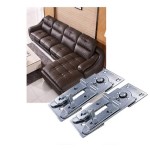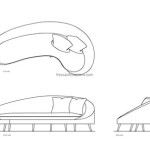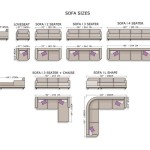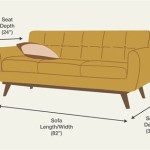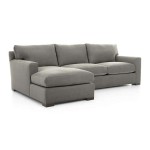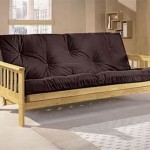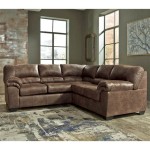Who Makes the Best Sofas? A Comparative Analysis
Selecting a sofa is a significant investment, requiring careful consideration of comfort, durability, style, and budget. The market offers a vast array of manufacturers, each with its unique strengths and weaknesses. Determining which brand produces the "best" sofas is subjective and depends heavily on individual priorities. This article aims to provide a comparative analysis of several prominent sofa manufacturers, highlighting their key features, materials, and target consumers.
A crucial aspect of assessing sofa quality is understanding the underlying construction. The frame serves as the foundation, influencing the sofa's longevity and stability. Hardwood frames, particularly kiln-dried hardwoods, are generally considered superior to those constructed from softwood or engineered wood. Kiln-drying removes moisture, minimizing the risk of warping or cracking over time. Suspension systems also play a vital role in comfort and support. Options include sinuous springs, eight-way hand-tied springs, and webbing. Eight-way hand-tied springs, while more expensive, are often praised for their superior support and even weight distribution. Sinuous springs provide adequate support at a more moderate price point. Webbing can be a viable option, especially in more contemporary designs.
Upholstery fabric is another critical factor influencing both aesthetics and durability. Options range from natural fibers like cotton and linen to synthetic materials such as polyester and microfiber. Leather sofas offer a luxurious feel and tend to be highly durable, though they require regular maintenance. Fabric choices are also extensive and require careful consideration to match lifestyle and anticipated use. Stain resistance and abrasion resistance are important considerations, especially for households with children or pets.
Key Point 1: Evaluating Craftsmanship and Material Quality
Assessing the craftsmanship and materials used by different sofa manufacturers is paramount. Brands known for exceptional attention to detail often employ skilled artisans who meticulously construct frames, ensuring joints are secure and durable. Similarly, the quality of the foam or down used in the cushions significantly impacts comfort and longevity. High-density foam is less likely to sag over time, while down-filled cushions offer a plush, luxurious feel but require more frequent fluffing. Some manufacturers offer a combination of foam and down, seeking to balance comfort and durability.
Several brands consistently receive high marks for their commitment to quality craftsmanship and materials. Thayer Coggin, for example, is renowned for its mid-century modern designs and its use of high-quality materials. Their sofas typically feature hardwood frames, eight-way hand-tied springs, and premium upholstery fabrics. Similarly, brands like Mitchell Gold + Bob Williams emphasize sustainable practices and use eco-friendly materials whenever possible. These manufacturers often command a higher price point, reflecting their commitment to quality and ethical sourcing.
On the other hand, some manufacturers prioritize affordability, often using less expensive materials and construction techniques. While these sofas may be more accessible to budget-conscious consumers, they may not offer the same level of durability or long-term comfort. Careful research and comparison are essential to ensure that the chosen sofa meets individual needs and expectations.
Key Point 2: Style and Design Considerations
Beyond construction and materials, style and design play a significant role in sofa selection. Different manufacturers specialize in distinct design aesthetics, ranging from classic and traditional to contemporary and minimalist. Understanding personal design preferences and how a sofa will integrate into the existing décor is crucial.
For example, brands like Restoration Hardware are known for their grand, traditional designs, often featuring deep seating, plush cushioning, and distressed finishes. These sofas evoke a sense of timeless elegance and are well-suited for larger living spaces. In contrast, companies like Article offer a range of mid-century modern and Scandinavian-inspired designs, characterized by clean lines, minimalist silhouettes, and muted color palettes. These sofas are often more compact and versatile, making them suitable for smaller apartments or contemporary homes.
Furthermore, customization options can significantly impact the overall design aesthetic. Some manufacturers offer a wide range of upholstery fabrics, leg styles, and configurations, allowing customers to create a truly unique and personalized sofa. Others provide a more limited selection, focusing on a curated collection of pre-designed models. The availability of customization options should be carefully considered based on individual design preferences and desired level of personalization.
Key Point 3: Price and Value Proposition
Price is inevitably a central consideration in sofa selection. The cost of a sofa can vary significantly depending on factors such as brand reputation, materials used, construction techniques, and design complexity. Evaluating the value proposition – the balance between price and quality – is crucial to making an informed decision.
High-end brands, such as those mentioned previously, often represent a significant investment. However, their commitment to quality craftsmanship and durable materials may result in a sofa that lasts for many years, potentially offsetting the initial cost over time. Mid-range brands offer a balance between affordability and quality, providing a good option for consumers seeking a durable and stylish sofa without breaking the bank. Budget-friendly brands offer the most accessible price points, but consumers should carefully assess the materials and construction to ensure that the sofa meets their basic needs and expectations. Retailers like IKEA present budget-conscious designs, with a focus on flat-pack assembly and affordability. However, construction and material quality, while adequate, are often not comparable to higher-end brands.
Sales and promotions can also influence the price of a sofa. Many manufacturers offer seasonal discounts or clearance sales, providing opportunities to purchase a high-quality sofa at a reduced price. Researching different retailers and comparing prices is essential to finding the best possible deal. Furthermore, considering the long-term cost of ownership, including maintenance and repairs, can help to assess the true value proposition of a particular sofa.
Ultimately, the "best" sofa manufacturer is the one that best aligns with individual needs, preferences, and budget. Careful consideration of craftsmanship, materials, style, and price is essential to making an informed decision and selecting a sofa that will provide years of comfort and enjoyment. Thorough research and comparing different brands are crucial steps in the process. Reading customer reviews and visiting showrooms to physically test the sofas can provide valuable insights into their comfort and quality.
The lifespan of a sofa heavily depends on its construction and the material used. Hardwood frames typically outlast softwood alternatives, and high-quality upholstery fabrics can withstand more wear and tear. Regular maintenance, such as vacuuming and spot cleaning, can also significantly extend the life of a sofa. Investing in a sofa cover can provide additional protection against spills and stains, particularly in households with children or pets.
Many consumers are increasingly concerned about the environmental impact of their purchases. Some sofa manufacturers are responding to this demand by using sustainable materials and employing eco-friendly production practices. Look for certifications such as the Sustainable Furnishings Council (SFC) to identify brands that are committed to environmental responsibility. Choosing sofas made from recycled materials or those with low-VOC finishes can contribute to a healthier indoor environment and reduce overall environmental impact.
In conclusion, selecting a sofa is a multifaceted decision requiring careful evaluation of various factors. By considering craftsmanship, materials, style, price, and environmental impact, consumers can make an informed choice and find a sofa that meets their individual needs and provides long-lasting comfort and enjoyment. The absence of a single "best" sofa manufacturer emphasizes the importance of personalized research and comparison to identify the ideal option for each unique situation.

Sofa Guide For 2024 Reviews By Wirecutter

Sofa Guide For 2024 Reviews By Wirecutter

Sofa Guide For 2024 Reviews By Wirecutter

22 Best Span Designer Sofas Where To Buy Luxury Couches

Best Sofa Place To Buy A

Best Sofas For 2024 Tried And Tested

Best Sofas For 2024 According To An Interiors Expert The Independent

My Top 10 Favorite Sofas From Least To Most Expensive Pottery Barn Macy S More
Sofa Guide 9 Best Places To Buy A Couch In 2024

15 Best Places To Buy A Couch In 2024 According Testing


